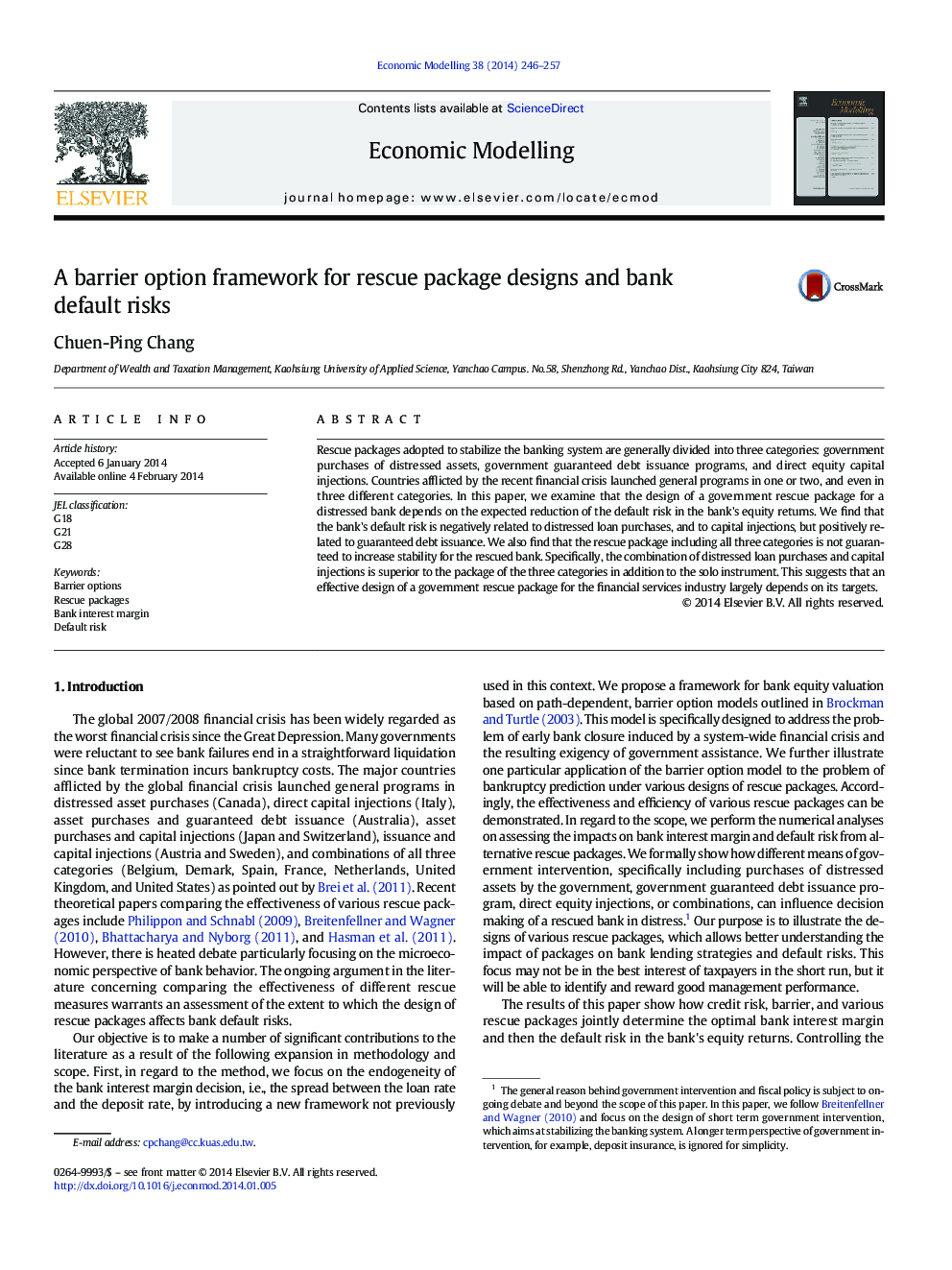| Article ID | Journal | Published Year | Pages | File Type |
|---|---|---|---|---|
| 5054373 | Economic Modelling | 2014 | 12 Pages |
Abstract
Rescue packages adopted to stabilize the banking system are generally divided into three categories: government purchases of distressed assets, government guaranteed debt issuance programs, and direct equity capital injections. Countries afflicted by the recent financial crisis launched general programs in one or two, and even in three different categories. In this paper, we examine that the design of a government rescue package for a distressed bank depends on the expected reduction of the default risk in the bank's equity returns. We find that the bank's default risk is negatively related to distressed loan purchases, and to capital injections, but positively related to guaranteed debt issuance. We also find that the rescue package including all three categories is not guaranteed to increase stability for the rescued bank. Specifically, the combination of distressed loan purchases and capital injections is superior to the package of the three categories in addition to the solo instrument. This suggests that an effective design of a government rescue package for the financial services industry largely depends on its targets.
Related Topics
Social Sciences and Humanities
Economics, Econometrics and Finance
Economics and Econometrics
Authors
Chuen-Ping Chang,
